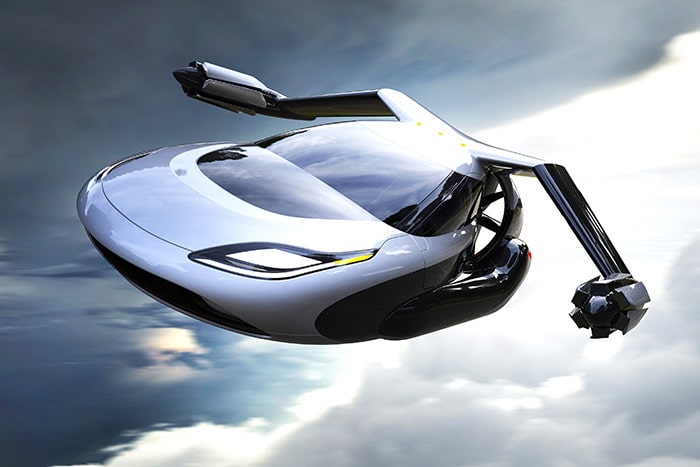In Japan, the SD-03 SkyDrive eVTOL flying car has been issued a safety certificate for the first time. By 2025, it can operate in the country as a taxi. “Hi-tech” tells what parameters can be used to check the safety of a flying car and why there are still problems with this.
Flying cars, air taxis and eVTOL, you can get confused even in the names of similar air transport. It is being developed by IT giants and amateur engineers in their garage – both have the right to do so, because there are still no uniform certification rules.
What is considered a flying car?
So far, there is no strict definition, but usually this concept is included in eVTOL transport or electric vertical takeoff and landing – these are electric vertical takeoff aircraft.
The helicopter is not included in this category. The architecture can also be any, since engineers are still experimenting with the number of propellers and their location, as well as ergonomics and the number of passengers in the cabin.
Why talk separately about eVTOL and helicopters, are they really different?
Yes, there are differences between a helicopter and eVTOL. For example, a helicopter is designed to hang in the air for a long time during the flight. This is necessary in order to carry out observation, to carry out rescue and installation work in a fixed position.
The closest in functionality to helicopters are multicopters, they cannot cover long distances, but they waste power to fix their position in the air. It is also cheaper to certify a helicopter due to the absence of a complex transitional maneuver between vertical and horizontal flight.
Among the main advantages of eVTOL are low emissions and low noise levels.
Which flying cars are considered certified and are there safety standards in this area?
Today, more than 300 companies are engaged in the development and assembly of flying cars. But so far, all projects are mostly at the planning and testing stage. A limited number of startups have working prototypes.
Another problem with the registration of new air taxis: safety certificates and air transportation rules – they are not. All these issues have yet to be resolved. Therefore, we will tell you about special cases in which the transport was certified.
For example, a drone that was created in China – EHang – has passed a number of successful tests over cities in Europe and South Korea, and also received a SAC (Special Airworthiness Certificate) airworthiness certificate there in Korea in 2020. To receive it, the device must pass inspection control, provide operational documentation and tell about the expected operating conditions.
The German company Volocopter also showed tests of a heavy cargo drone capable of carrying 200 kg of cargo over 40 km. Now she is engaged in the final certification of her transport. The first commercial flights to Singapore should be launched by 2023.
Munich-based startup Lilium is also working on an air taxi. In 2020, the company showed a prototype of a five-seat aircraft. During level flight, the transport consumes only about 10% of its maximum power.
In 2020, the company’s transport was given the CRI-A01 certificate from the European Aviation Safety Agency (EASA). But this is not a document that gives permission for flights, but something like a list of requirements and technical problems that need to be addressed and corrected before going to the final certification.
A CRI is a formal document issued before certification to highlight major technical, administrative or interpretation issues that arise between a new aircraft and certification.
And what about Russia?
At the end of January, the Russian startup Hover began testing a flying taxi in Moscow, at the small arena in Luzhniki. The general director of the Hover hoverbike developer company Alexander Atamanov said that the start of operation of the first flying taxi in Russia is planned in 2025.
The device can carry two people and accelerate to 200 km / h. At this speed, the transport covers 100 km without recharging, which is about half an hour in the air. The passenger drone has a payload capacity of 300kg and can lift 150m above the ground.
Sergei Izvolsky, adviser to the head of the Federal Air Transport Agency, said that now the transport needs certification from the agency. It must be initiated by the manufacturer.
So far, there are no accounting and registration regulations for manned vehicles in Russia. Legislation is moving in this direction, but it is impossible to estimate how long it will take, he added.
________________________________________
Until now, a unified regulation for the certification of electric air transport, flying cars and eVTOL has not appeared. But IT corporations promise that air taxi will appear in the next five to ten years or even earlier.
This means that you need to have time to create a classification of this type of transport, a set of measures for security checks, as well as establish the frequency with which you need to undergo maintenance and what should be included in it.









